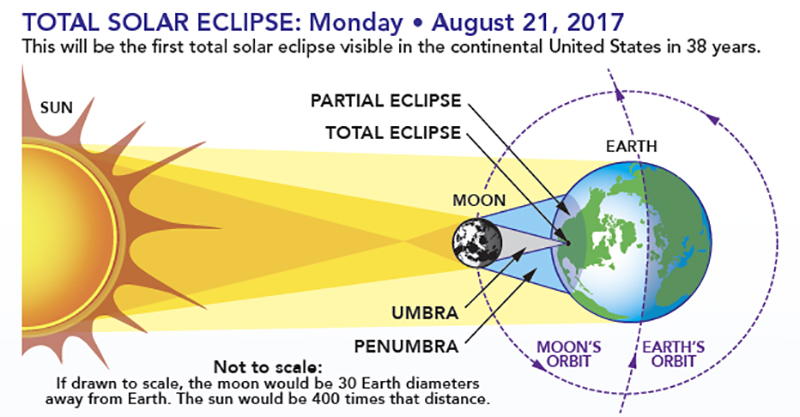On Monday, August 21, North America will be able to view an eclipse of the sun.

Solar eclipses happen when the moon passes between the sun and the Earth, covering up part of the sun. During a total eclipse, the moon will align perfectly with the sun, completely covering it, causing complete darkness. While the sun is in a total eclipse, the sun’s tenuous atmosphere called the corona can be seen.
The brighter stars will be able to be seen. According to NASA, animals will change their behavior, settling down to go to bed. Birds will stop singing and nest and crickets will begin chirping. There will also be a noticeable drop in temperature.
As the moon starts to move between the sun and the Earth, a partial eclipse will begin. In this phase, only a portion of the sun is covered.
As the moon continues to travel covering up the sun, the eclipse will move into a total eclipse. Finally, the moon’s rotation continues, creating another partial eclipse as the moon moves away from the sun. The entire event will take place over the course of approximately three hours.
Anyone in the path of totality will see a complete total eclipse. For the 2017 event, the period of totality will range from 30 seconds to two minutes and 40 seconds, depending on where the viewer is in the path of the event.
An eclipse does not happen often. According to NASA scientists, the moon’s orbit is tilted in relation to the Earth’s orbit around the sun, differing by five degrees. The moon often passes slightly higher or lower than the sun in its orbit. Only when the sun, moon and the Earth align perfectly will an eclipse occur.




Facebook Comments